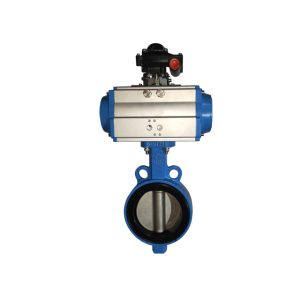Table of Contents
ToggleGlobe valves are key items in many industries, acknowledged for their reliability to control different materials flowing in pipes.
With its simple but unique round design and made from reliable materials like stainless steel, it allows them to effectively control the gas or fluid going through the valve.
Read further to discover more about the several globe valve designs and materials, as well as how to choose the best one for your specific requirements.
The Structure and Main Parts of a Globe Valve
Globe valves are identified by its circular body, which contains all of the other components. The actuator, often known as the handwheel, is one of the first components you’ll recognize. It controls how the stem and disc move when you turn them; this can be done manually or automatically.
The disc or plug moves with the stem that either blocks the path or lets the material pass in the valve. While the stem is the one that is directly connected to the actuator that adjusts the disc up and down. Lastly, the seat is where the disc connects to create a strong seal when the valve is closed.
Therefore, according to M.O. Okelola et al. ‘s research, “Globe valve’s common application is for isolation and throttling services. It has a good shut-off ability.”
It is because the globe valve’s whole design and components ensure an effective seal when the disc is closed.
How Does the Globe Valve Work?
Globe valves use a disk or plug to open or close the flow’s path. When the valve is closed, the disc is pushed down tightly against the seat to completely block the passage. But when the valve is open, the stem pulls the disc away from the seat.
It allows you to manage their flow rate using the actuator to slightly open the valve. The larger the opening, the more material will pass through the valve.
If you want to learn more about how they work, this simple and detailed animation might help you.
Types of Globe Valves Design
| Globe valve design | Unique features | Advantages | Disadvantages |
| Z-Type | A globe valve that has a disc and stem aligned vertically to the horizontal seat. The material either enters from the bottom hole or leaves at the opposite port. This creates the path that resembles “z”. | It has good throttling capability because of the disc and stem alignment as well as the unique ‘z’-shaped path. It’s simple design makes it easy to install and most commonly used. | It had a more z-shaped path that constantly changed the material’s flow direction. Thus, this leads to higher pressure drops. |
| Y-Type | The seat, stem, and actuator are positioned around a 45-degree angle between the inlet and outlet holes. So, it gives it the unique “y”-shaped body. | It had a straighter flow path, which lessens higher pressure drops while maintaining good throttling capability. | Is considered having a more complex design. Therefore, it is also more difficult to install and manufacture this design. |
| Angle Pattern | The input and output ports are 90 degrees to one another. It also has a disc and stem aligned vertically to the horizontal seat. | Minimises pressure drop while allowing changing flow direction. It is also best for small spaces. | Have limited throttling too due to the lower coefficient of flow. |
Different Globe Valve’s Disc design
There are various globe valve disc styles to pick from, and they tend to be made of stainless steel. Here are the 3 disc designs for globe valve:
- Ball disc-Its round form makes it suitable for on/off operations but not for effective throttling.
- Plug disc- Its long and curved design makes it resilient to erosion and allows for better throttling.
- Composition disc- Its flat surfaces are often constructed from metal, while the nonmetallic band helps to ensure proper sealing.
Different Globe Valve’s Material for Body
There are different globe valve materials for its body; here are some of them, including their advantages:
Cast Iron Globe Valve
Also one of the most budget-friendly materials. They’re best for simpler uses because they’re only strong enough for lower temperatures and pressure.
The Code of Federal Regulations (CFR) states that cast iron should not be used over 450°F. It also highlighted that it must follow Classes 125 and 250 to ensure safe operation.
Carbon Steel Globe Valve
One of the materials popular for their strength in different industrial products. As shown in the Carbon Steel Handbook by the Electric Power Research Institute, these materials can handle up to 800ºF.
This is also one of the less expensive materials. While they may rust because they don’t have enough chromium, users still love their durability.
Stainless Steel Globe Valve
Stainless steel is also one of the best materials for globe valves because they’re highly resistant to corrosion. According to the Alberto Ubaldini et al. study, stainless steel has good corrosion resistance because chromium is mixed into its material.
This makes them best for industries that handle dangerous materials. Although stainless steel is expensive, their notable qualities make them a worthy material to use for globe valves.
The Globe Valve’s Stem and Seat Material
The valve’s stem can be made from carbon steel and special alloys. However, stainless steel is the most commonly used material for stems and other components considering its high resistance to rust and wear.
This is crucial because the stem will have to handle the repeated uses and moving against the packing to prevent leaking.
Meanwhile, aside from stainless steel, the valve seat can be made of the following materials, each with its own set of advantages:
- RTFE- Has better strength and wear resistance than regular TFE because of the mixed materials, like glass fibre.
- PTFE, or Teflon- resilient to many different kinds of chemicals and can handle 93ºC as well as pressures under 1500 psi.
Xintai Valve: Globe Valve Manufacturer
Xintai was founded in 1998 and is one of the trusted manufacturers of globe valves in Wenzhou. They have different certifications from many government agencies that show their reliability, such as:
- American Petroleum Institute
- Certificate of Quality System Approval
- Quality Management System Certificate of Approval
- And so on
Furthermore, they provide an extensive selection of globe valve products that are guaranteed to be of high quality for maximum efficiency and smooth operation. If you have additional questions, don’t hesitate to contact them, and perhaps consider partnering with them now.
Frequently Asked Questions
What are the limitations of a globe valve?
One of Globe’s limitations is that it is more vulnerable to causing a large pressure drop since it has its more complex path flow.
This leads to another issue with globe valves: they’re more likely to cause cavitation and loud noises.
What is the globe valve most suitable for?
The globe valve’s design makes it ideal for controlling flow and forming a tight seal in pipes to prevent leakage during high-pressure uses.
This makes them ideal for application in several kinds of industries, including chemical, oil, gas, power generation, and much more.
- Carbon Steel Handbook
- Fundamentals of Valves
- How Globe Valves Work
- Cast iron and Malleable iron
- Globe Valves Explained By Svree
- Carbon Steel Vs. Stainless Steel by Thyssenkrupp
- Selecting the Right Materials for Your Globe Valves
- The Complete Guide to Understanding Globe Valves
- Carbon Steel Vs. Stainless Steel by Metal Warehouse
- Engineering Bulletin Ball Valve Seat and Seal Material
- Globe Valve Used on Ships : Design and Maintenance
- Sciencedirect’s articles and chapters about Globe Valve
- What You Need to Know About Globe Valves by Xintai Valve
- The Ultimate Guide to Globe Valves: Design, Functionality, and Applications
- Stability Analysis of Globe Valve Using Classical Techniques by M.O Okelola, Philip Adesola Adewuyi, Aborisade David Olugbenga, and Adesola











